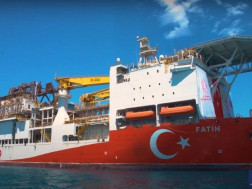Natural gas (also called fossil gas, methane gas or simply gas) is a naturally occurring mixture of gaseous hydrocarbons consisting primarily of methane (97%) in addition to various smaller amounts of other higher alkanes. Natural gas is important for the global economy, especially in the context of transitioning to a low-carbon or renewable energy future. natural gas is sometimes considered a transitional fuel. It produces fewer greenhouse gas emissions compared to coal and oil, making it a more environmentally friendly option as countries work towards adopting cleaner energy sources.
Natural gas prices and some of the publicly traded natural gas ETFs are trading at multi year low levels and could be setting up for a tactical and/or strategic asset allocation opportunity.
Investing in Natural gas could be considered as a part of a globally well diversified portfolio as Thematic commodity investing. Thematic commodity investing is an approach which focuses on predicted long-term trends rather than specific companies or sectors, enabling investors to access structural shifts.
Companies active in the natural gas industry in the United States have been said to be in an “arms race for operational scale and investor relevancy.”
The backfill of Russian piped gas via LNG has hiked competition for cargoes between Europe and Asia, making the JKM-Henry Hub spread a critical factor for investors to consider. JKM stands for the Japan-Korea Marker, which is a crucial benchmark for liquefied natural gas (LNG) prices.
An economist and financial market professional and seasoned investor might tell you that more often than not in commodity markets low prices are the cure for low prices and high prices are the cure for high prices.
The evolution of the shale industry comes at a time when the energy sector of the U.S. stock market makes up just 3.8% of the S&P 500 Index despite America’s status as the world’s premier oil producer, pumping 45% more crude than the Kingdom of Saudi Arabia.
To put the transition in perspective, the cohort of publicly traded shale explorers shrank by about 40% over the past six years to roughly 50 today, according to Warwick Investment Group LLC.
When production of Natural Gas is viewed by country, the U.S. is the top producer of natural gas followed by Russia. The London listed WT natural gas has declined -85% over the last five years and is down -28% YTD year-to-date 2024.
World famous investment manager and USA democratic party donor and early supporter of Barak Obama, George Soros famously joked that “an investment is a speculation gone wrong.” In countries and as well as in commodity markets the most money for investors is usually made when things go from terribly awful to just awful or just bad.
In a free market economy, corporate deals and industry consolidation can help an investor form a bearish or bullish market view.
Last week’s $26 billion combination of two Texas oil companies is the latest in a series of deals that’s ushering in the era of Big Shale. Wall Street, which eyed the natural gas sector with scepticism for most of the last decade, appears to turn bullish and be all in on natural gas.
Kremlin critic Mr. Navalny allegedly once referred to the Russian federation as a massive natural gas station under the wrong and authoritarian management. The largest listed natural gas companies Gazprom and China National Petroleum are domiciled and legal risk Mr. Putin’s Russia and the People’s republic of Mr. XI Jing Ping. Gazprom from the Russian federation is under united states sanctions.
The high-price cure can be enduring and European gas appears in the early days of a downward price revision. Resistance is likely solidifying around 60-month moving averages, on the cusp of reverting to a decline. Levels from before Russia's Invasion of Ukraine may be revisited, with US natural gas providing some guidance.
EU natural gas may be transitioning 30 euros per megawatt hour back to resistance. The downward reversion process from the historic 2022 spike could continue for some time, if US natural gas is a guide. The passage of time alleviating the Ukraine war premium in European gas is likely to remain a leading price headwind.
There are not many natural gas ETFs that are domiciled within the European Union. This is due to the regulatory framework which is defined by the European UCITS directive. According to these guidelines, an index (and thus also corresponding ETFs) must always provide a minimum degree of diversification and may not consist of only one component.
Most liquid natural gas ETFs are listed in the US market, often in the legal form of “partnership”.
Some brokers and private bank can not buy or custody some of these investment vehicles.
Most of the natural gas ETFs gain exposure to natural gas prices through futures contacts, rather than via stocks of natural gas companies. Many will track the Bloomberg Natural Gas Subindex, the main benchmark index for this area.
NGAS is the WisdomTree Natural Gas (NGAS) and is traded and listed in the UK market and on the London stock exchange and traded in United states dollars. NGAS closed the week of February 16th at USD 7.9175 levels.
The WisdomTree Natural Gas (NGAS/NGSP) is designed to provide investors with exposure to a total return investment in natural gas. It achieves this by tracking the Bloomberg Natural Gas Subindex and offering a collateral yield. the issuer risk of NGAS is: WisdomTree Commodity Securities Limited and the asset class is “commodities”.
Commodities like Natural gas prices can be highly volatile and are influenced by various factors such as supply and demand dynamics, geopolitical events, weather patterns, and economic conditions. Sudden and significant price fluctuations can impact the value of natural gas investments.
Political instability, conflicts, and changes in government policies in major natural gas-producing regions can affect the supply and pricing of natural gas. Events like war or trade disputes, sanctions, or geopolitical tensions can further impact the market.
Natural gas demand is heavily influenced by weather patterns. Mild winters or cooler-than-expected summers can lead to lower demand for heating or cooling, affecting natural gas prices. Unpredictable weather events, such as hurricanes, can also disrupt production and supply.
Changes in government regulations related to the natural gas industry, environmental policies, or energy production can impact the profitability and viability of natural gas investments. Regulatory shifts towards renewable energy sources may also affect the demand for natural gas.
Limitations in the transportation and storage infrastructure for natural gas can impact the ability to deliver supply where it's needed. Infrastructure bottlenecks or disruptions can affect the supply-demand balance and prices.
Natural gas is often traded in global markets, and currency fluctuations can impact the profitability of investments for individuals trading in different currencies.
Increasing awareness and regulatory focus on environmental issues, including concerns about greenhouse gas emissions associated with natural gas production, may impact the industry. This could lead to stricter regulations or a shift in public perception, affecting the market.
Some natural gas investments, particularly in smaller companies or less-liquid markets, may lack sufficient liquidity. This can make it challenging to buy or sell positions at desired prices.
It may take an unforeseen supply shock to sustain US natural gas above $4 per million Btu, but more of the same since 2008 points to below $2 for an enduring bottom. The market could be returning to the lower-lows pattern seen before Russia's invasion of Ukraine, with trickle-down deflationary implications.
High-velocity ephemeral price spikes are normal in the benchmark natural gas future. In price levels, swiftness and the futures curve, 2022 has parallels to 2000-01.
There could potential for a similar outcome to about 22 years ago, when the natural gas future peaked near $10 per MMBtu, Million British Thermal Units, then dropped to $2.
Lower gas demand for power due to elevated hydro and nuclear generation, dwindling carbon costs and subdued JKM-Henry Hub price spreads point to sustained pressure on European gas prices.
JKM stands for the Japan-Korea Marker, which is a crucial benchmark for liquefied natural gas (LNG) prices. It plays a significant role in the global energy market.
Barring a widespread, prolonged conflict in the Middle East, LNG disruption risks seem manageable, while competition for cargoes with Asia is muted by ample supply.
A shift in gas production vs. consumption substantial enough to sustain relatively elevated prices needs to be determined by the market. supply-and-demand elasticity, will always be important for any client or investor considering investment in natural gas.
Before investing in natural gas or any other commodity, it's crucial to thoroughly research and consider the risks and opportunities. Diversification, staying informed about market conditions, and consulting with financial professionals can help manage these risks.
Rainer Michael Preiss, Partner & Portfolio Strategist at Das Family Office in Singapore
















